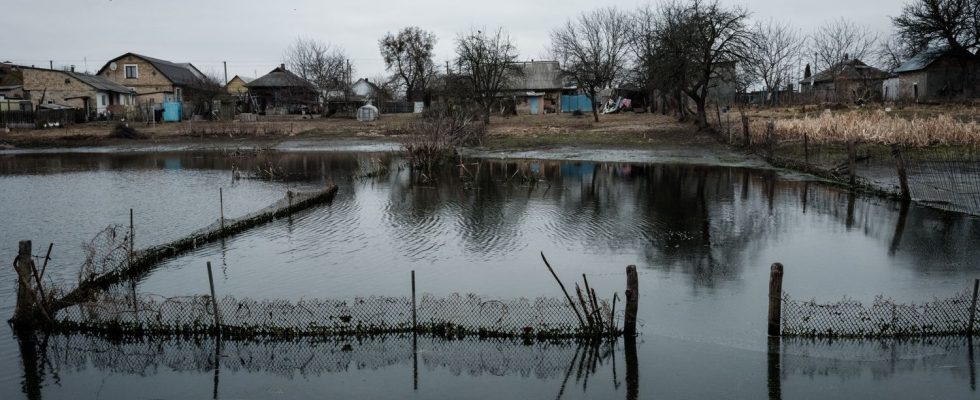From ravaged forests to flooded cities, the environmental destruction caused by the war in Ukraine will affect “several generations” according to the United Nations. Example in Demydiv located north of kyiv.
Published
Reading time: 2 min

On both sides of the road there is water, like a lake. However, the map on the GPS screen does not show any body of water. Electric poles protrude from the surface and remind us that here, before the war, there were lands, fields, animals. Almost two years ago, the Ukrainian army deliberately flooded these lands north of kyiv to stop the arrival of Russian columns. She dynamited the dams to protect the capital.
The use of nature as a weapon of war is not new and is used on both sides of this war. Since the start of the Russian invasion, environmental destruction in Ukraine has been a “tragedy” of a rare magnitude which will affect “several generations” according to the United Nations.
“Everything was flooded”
Demydiv is a small village, a few thousand people. In the past, behind the dike at the end of the now frozen road, there were fields. The houses in this village are simple. Like that of this old man who beckons us to follow him, into his courtyard. His name is Grisha. “There was water everywhere, remembers the Ukrainian. Little by little she arrived at our house. Everything was flooded.”
In Gricha’s barn, the smell hits the throat, despite the cold. Under the ice, we can see mold on the carrots and potatoes. The breaking of the dam helped protect kyiv, but not Demydiv. It will probably take more than ten years for pumps to dry the ground. The water that surfaces covers the floors of the houses with ice.
Incalculable environmental consequences
The cost of environmental damage from the war in Ukraine is phenomenal, almost $56 billion. Nearly 30% of Ukraine’s forest areas and about 20% of national nature parks have been affected. In front of another house in Demydiv, there is Nina. A scarf tied under the chin, gold teeth, the rough hands of those who work the land. Because of the stagnant water, Nina can no longer farm. “The water stagnates at the end of our vegetable garden. We suffer because we are villagers, we work the land. What does the village survive with? With what we grow: potatoes, carrots, cabbages , all that! We gave up on half of the vegetable garden because there was too much water.”
“We hoped this winter to be able to store what we had harvested in the cellars. But they are full of water. Here they are, the consequences!”
Nina, resident of Demydivat franceinfo
For Sofia Sadogurska of the NGO Eco action, the environmental consequences of wars are in fact incalculable: “All military hostilities, all explosions have an impact on the environment, because of explosive substances, heavy metals and other materials which end up in the ground and in the water. And there are places where we cannot no longer have any agricultural activity.”
The ecological catastrophe is everywhere. The continuation of high-intensity warfare prohibits access to many areas. And no one yet understands the immensity of its consequences. Consequences that will last decades, long after the end of the last hostilities.
